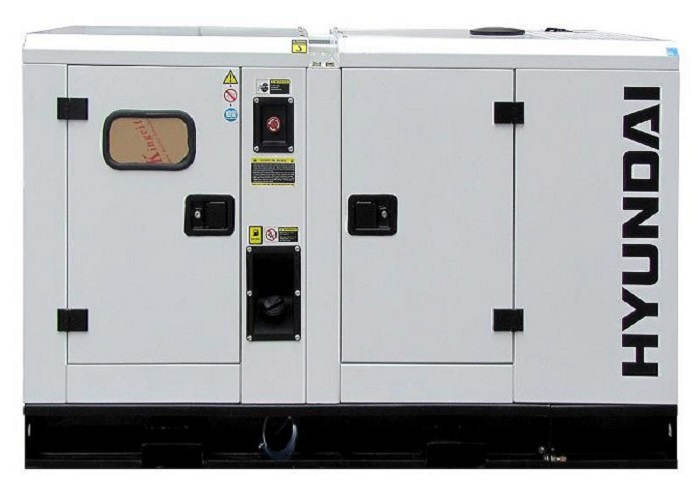- Report: Cost of Fuelling Generators Estimated to Hit N5tn by 2017
Given the increase in the pump price of petrol and diesel this year, the total amount spent by households and businesses to power their generators may rise to N5trillion by 2017, higher than the N3.5 trillion it was before the price hike, a report has projected.
The Financial Derivatives Company Limited stated this in its latest Business and Economic Bulletin for October obtained recently. The report pointed out that the shortage and unreliability of power and the need for Nigerians to generate their own electricity adds unnecessary cost inefficiencies to households and businesses.
It noted that with companies such as MTN reportedly spending about N8 billion on power generation annually, that shows that the present power situation has negative connotations for business operations and profitability.
In its Ease of Doing Business Report, the World Bank drew a parallel between Nigeria’s frail power sector and its business environment. Accordingly, the procedures, time and costs involved in getting connected electricity, combined with the unreliability of the power supply and the per unit electricity bills are factors that contribute to making Nigeria a tough place to do business.
Using Lagos State as a proxy, the FDC report revealed that it takes 184 days (6 months) on average from the moment you submit an application for electricity connection to initial electricity flow.
In the 2016 World Bank rankings, Nigeria came 182 out of 189 countries in the ‘Ease of getting electricity’ sub- index. Furthermore, Nigeria scores zero out of eight on the reliability of supply and transparency of tariff index.
“The importance of electricity lies in its status as a necessary intermediary in the economy. It does not represent an end in itself but it is required for the success of other initiatives or activities. These activities can generate welfare or leisure, increase efficiency or productivity, and generate income.
“It means that if Nigeria is to realise the dream of becoming the number one Foreign Direct Investment (FDI) destination in the world, with a booming economy and tourism, then something needs to be done about power- and fast! Constant and reliable electricity will cut business costs; this will translate into increased efficiency, productivity, output, job creation and economic activity,” it stressed.
Furthermore, the report stated that the challenges the power sector faces are deep-rooted and multi-faceted.
It explained that at the generation level, the GENCOs continue to produce at sub-optimal levels; saying even if they did not, their total installed capacity would still be unable to meet electricity demands. Outdated technology, poor maintenance, low investments etc. are some reasons for this.
Also, the GENCOs that use natural gas are affected by pipeline vandalism and exchange rate illiquidity, both of which lead to gas shortages and shortfall in generation.
At the transmission level, the national grid’s carrying power is too modest, such that even if GENCOS were to generate more, the grid would not be able to handle it, it further explained. In addition to this, great amounts of electricity are lost in transmission.
“Although TNC claims an average transmission loss of about 8.5 per cent, the loss is estimated to be much greater due to deteriorating infrastructure. Furthermore, the DISCOs battle with customers who do not pay their bills- the biggest culprit being the Nigerian government.
“As at first quarter 2016, the government had about $300 million in unpaid electricity bills. While it is easier for DISCO agents to threaten the aver-age citizen with notices and written warnings, it more difficult to do so with national departments such as the army barracks. Operators also complain that the current tariff levels are not sufficient to break even,” it added.
The Nigerian Electricity Regulation Commission had been ordered to reverse its 45 per cent hike in tariffs by the Federal High Court in Lagos. Backed by the Ministry of Power, the NERC is seeking appeal at the Supreme Court.
“It is no surprise that these energy industry players have huge debt burdens. As at March 2016, GENCOs had outstanding loans of N367 billion in total. TCN and DISCOs have a joint debt of N162 billion. This increases the profitability risk of the sector and discourages further private investments.
“The major problem of the power sector is one of funds and infrastructure, which can only be tackled with investments into procurement, maintenance and operation,” it added.
The government had initiated a N213 billion Nigerian Electricity Market Stabilisation Facility (NEMSF), out of which a total of N55.4billion has been disbursed so far. Additionally, according to a Memorandum of Understanding with Chinese firms, about $50 million would be invested into gas infrastructure, pipelines, power etc. If implemented efficiently and completely, this brings large promise to the power sector.

 Naira4 weeks ago
Naira4 weeks ago


 Naira4 weeks ago
Naira4 weeks ago




 Naira4 weeks ago
Naira4 weeks ago




 Naira3 weeks ago
Naira3 weeks ago


 News4 weeks ago
News4 weeks ago
 Travel4 weeks ago
Travel4 weeks ago




 Naira3 weeks ago
Naira3 weeks ago


 Jobs3 weeks ago
Jobs3 weeks ago






















